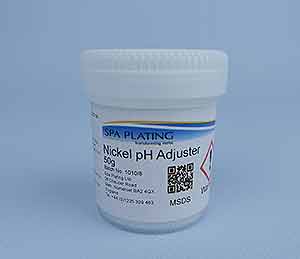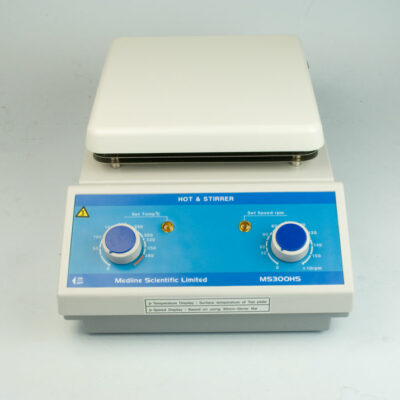Spa Plating’s Dull Nickel Tank Plating Solution has many useful engineering applications.
It can be used to build up worn or over-machined parts and because very thick coatings of over 2,000 microns (0.2mm) are possible, it is ideal for electroforms or building up nickel on mandrels.
The deposit is semi-matt but it can be polished easily on a buffing machine to a mirror finish.
We recommend this solution is continuously filtered through an inline filter (beaker plating) or a filter pump for larger installations.
Click on the Videos tab to view a typical beaker filtration set-up.
Note: You can use the Nickel Tank Plating Calculator for help with pH adjustments of this solution. Please click on the ‘Calculator’ tab to reach this.
HS Code: 3824 99 70.
Nickel continuously pumped using a peristaltic pump connected to
an online filter.
Machining a thick layer of dull nickel.
Back to Product Description
Nickel Tank Plating Calculator
How to use the Nickel Tank Calculator :
1. In the first box, enter the thickness that you want to plate to in microns.
2. In the second box, enter the surface area of the article in square centimetres (cm2).
3. Click the ‘Calculate’ button.
4. Read off the amp setting for your rectifier, the plating time and the amount of Nickel Tank Maintenance Brightener to add before starting the plating sequence.
5. The weight of nickel plated is shown in the final box.
How to use the pH Control Calculator :
1. Measure the pH of the Nickel Tank Plating Solution and enter the result in the box marked ‘Actual pH’.
2. Enter the pH that you wish to attain in the box marked ‘Desired pH’.
3. Finally enter the volume of the plating tank/beaker.
4. Click the ‘Calculate’ button.
5. Read off the weight of Nickel pH Adjuster to add to attain the desired pH.
Operating Conditions and Deposit Data
| Plating Factor |
0.02 A/cm2 Note 1 |
| Plating rate |
0.2 micron per minute at 0.01A/cm2 |
| Plating rate |
0.4 micron per minute at 0.02 A/cm2 |
| Cathode Efficiency |
~95% |
| Anode efficiency |
97 – 100% |
| Temperature |
18 – 60 °C Note 2 |
| Deposit appearance |
Dull/matt/satin Note 3 |
| pH |
4.6 – 5.2 Note 4 |
| Nickel concentration |
74 grams per litre |
| Agitation |
Medium |
| Anodes (rod electrodes) |
Nickel Rod (bagged) |
| Nickel content in plate |
99% (balance carbon, sulphur) |
| Hardness |
350-400 Hv |
| Density of deposit |
8.9 g/cm3 |
| Stress |
low – medium |
| Special storage requirements |
None |
| Shelf life |
1 – 2 years |
| Health and Safety classification |
Irritant |
| Special considerations |
None |
| Transport (UN number) |
None: Not classified as dangerous for transport |
Notes:
- If a high plating factor is used, agitation will need to be increased.
- Higher temperatures facilitate higher plating rates (by allowing for
higher plating factors) and lower stress deposits.
- Appearance of the plate at lower thickness is dull or matt turning more
of a satin shade at thicknesses over 25 microns.
- The pH usually increases with usage and can be reduced using Nickel pH
Adjuster.
The amount of pH adjuser can be calculated using the Nickel Tank Plating Calculator.
- Higher current densities (plating factor) generally results in a higher rate of increase of pH.
General guide;
Certain small items, for example Swabs, Nibs and Plating Pens can be sent by normal post within the UK
- The courier option for UK deliveries is FedEx
- Free UK mainland delivery available on orders over £200
- International orders usually 3-5 working days.
For all price quotations for deliveries, please add your items to our shopping cart. You will be able to see the shipping costs by clicking on the ‘Calculate shipping’ button in the cart and before checking out.
Please click on the link below to download the SDS for this product:
https://goldn.b-cdn.net/msds/dull_nickel_tank_plating_solution.pdf




